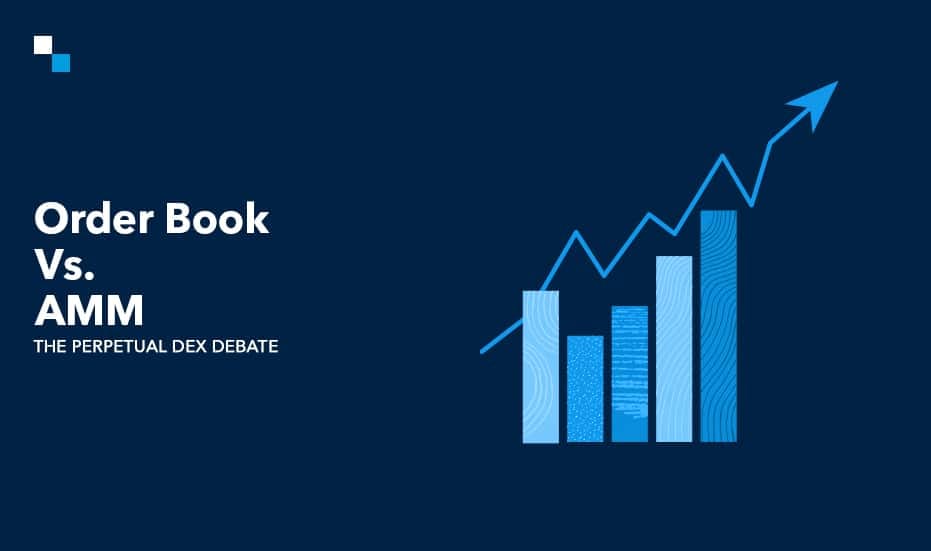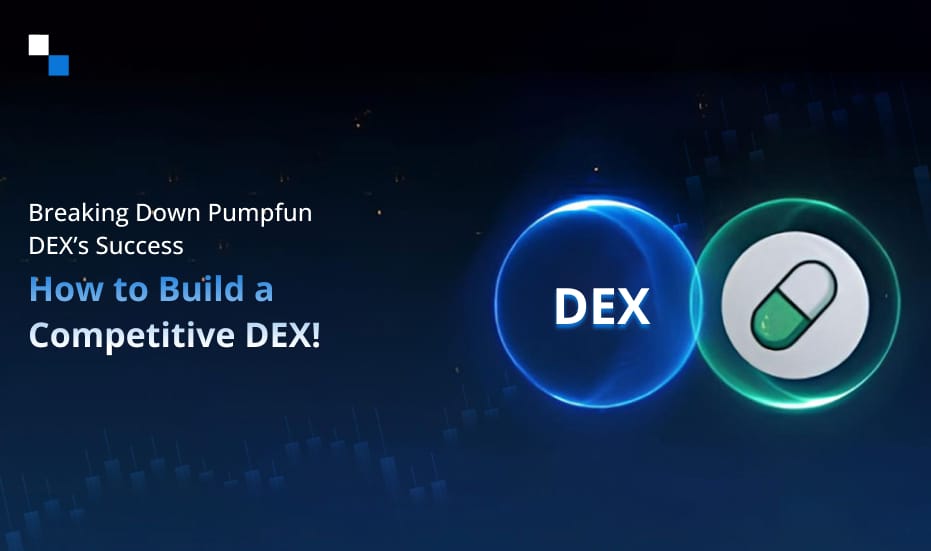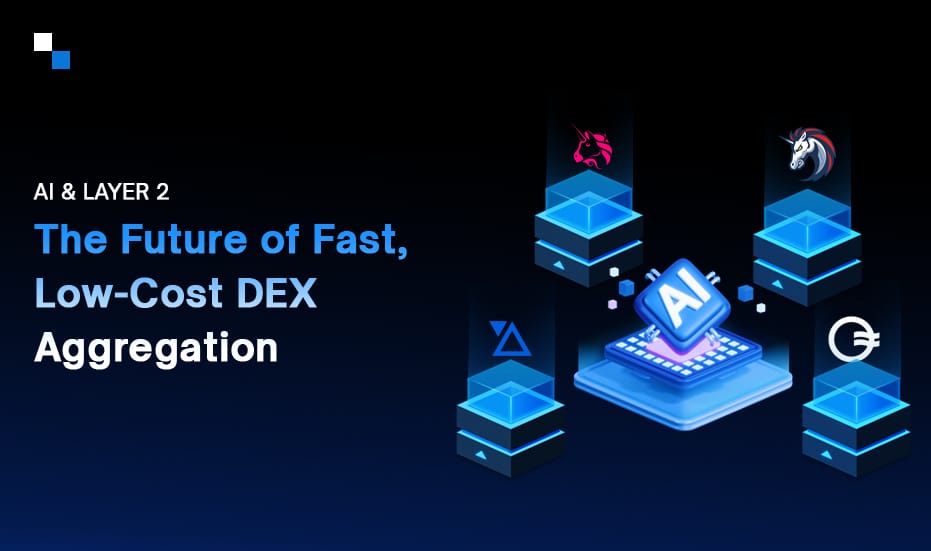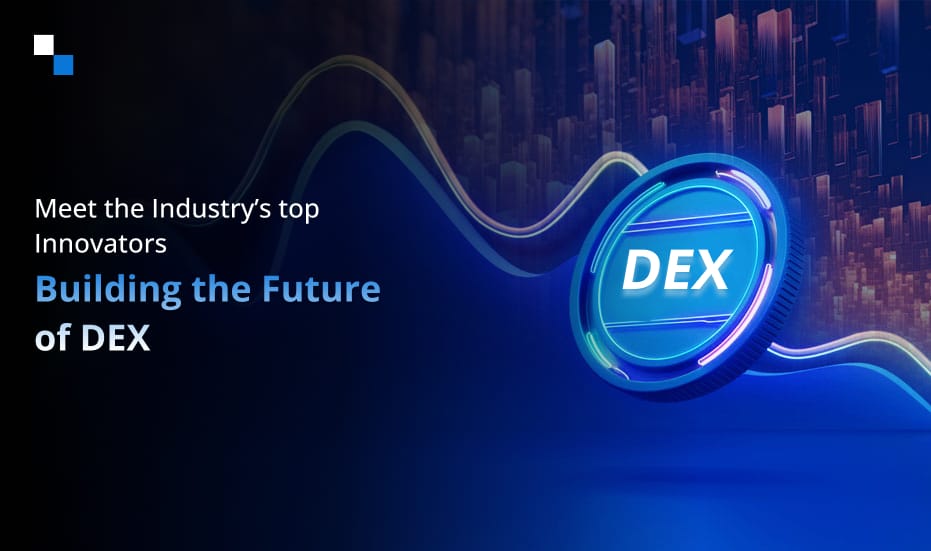Lowest fees, deepest liquidity, and fastest order execution make a robust value proposition and that’s how CEXs combat DEXs. Despite strong competition from counterparts, DEX adoption has been soaring. In March 2023, DEXs to CEXs spot trading volume crossed the 10% mark and this year, it’s been on the rise again.
While spot decentralized crypto exchange software solutions are already making significant strides, the potential of on-chain perpetual trading is yet to be fully unleashed. The slower adoption rates resemble pre-DeFi summers in spot markets where CEXs dominated fearlessly before DEXs made their winning moves. The future seems bright for decentralized crypto exchange software solutions incorporating perpetual and futures trading modules. Let’s shed light on:
Table of Contents
Understanding Decentralized Perpetual Exchanges and Their Features
Perpetuals are a significant facet of a fully matured financial system. Their importance in the crypto economy should not be understated given their increased trading volumes compared to spot markets. These financial instruments enable leveraged exposure to underlying assets and eliminate the constraints of expiration dates, empowering traders with flexibility and the opportunity to profit from both long and short positions.
Perpetual DEX, or decentralized perpetual exchanges, are a type of non-custodial trading platform that allows traders to trade perpetual contracts. They embody the following features:
- Decentralization: With blockchain-based smart contracts at their core, these platforms need no third-party intervention to operate. They autonomously execute actions as per pre-programmed inputs.
- Non-Custodial: As mentioned above, order book DEX and perpetual DEX of any type don’t require any human intervention. They can independently work without holding users’ crypto assets. Unlike in CEXs, no centralized authority holds users’ private keys.
- Permission-Less: This makes perp DEXs stand out, as anyone with a reliable crypto wallet can access these platforms without seeking any permission—no KYC, account approvals, or dependencies on the decentralized crypto exchange software operator.
- Leveraged Trading and Never-Ending Contracts: Traders can leverage their positions, enter into long or short position bets, and keep the trade open for an indefinite period, given enough collateral is provided. However, they can choose to exit the trade at any time and claim their margin.
- Order Book Trading Models: Order Book perpetual DEXs are a convergence of familiarity of order books and the power of decentralization.
- Liquidity Pools: AMMs or Automated Market Makers thrive on liquidity pools. They are specific types of smart contracts inviting and storing funds from individuals and institutions to underpin the DEXes with robust liquidity. In return, the liquidity providers of LPs are paid a certain percentage of the fee generated by the platform.
Since experienced traders leverage decentralized perpetual exchanges to execute exclusive and complex trading strategies, decentralized crypto exchange software operators can benefit from enhanced profit exposure.

Source: CryptoRank
Let’s first discuss the popular types of Perp DEXs that entrepreneurs planning to penetrate the market can consider.
Order Book Perpetual DEXs and AMM-Based Perpetual DEXs: An Overview
Order Book Perpetual DEXs
Order books are a preferred trading model for both retail and institutional customers. Makers or liquidity providers adhere to an active market-making or hedging strategy that most retail investors don’t follow. Therefore, these perpetual DEXs flaunt abundant liquidity, arranged by professional market makers.
Order Book Perpetual DEXs function similarly to traditional centralized exchanges (CEXs) but with a decentralized framework. In these DEXs, buy and sell orders are placed by traders and matched based on price and time priority. The order book records all active buy and sell orders, and the matching engine facilitates trades when there is a match between the order prices. Fully on-chain decentralized perpetual exchanges or face significant challenges such as throughput limitations, blockchain latency, front-running, and manipulation vulnerabilities. However, Solana and Monad, on an infrastructure level, are striving to resolve the issue.
Key Characteristics:
- Liquidity: Relies on market makers or institutional investors with robust strategies to provide liquidity.
- Slippage: Typically lower slippage due to precise order matching.
- Lowered Barriers to Entry: Order book perpetual DEXs, due to their resemblance with more prominent and trusted centralized models, are easier to adopt and operate for all classes of traders.
- Price Discovery: Prices are determined by the highest buy order and the lowest sell order in the order book.
- Top Players: HyperLiquid, Zeta, LogX, etc.
AMM-Based Perpetual DEXs
Many decentralized crypto exchange software solutions leverage AMMs to incorporate liquidity, which further uses algorithms to modify token prices based on supply/demand. AMM-based perpetual DEXs operate on a different mechanism where liquidity is provided by liquidity pools rather than individual traders or institutions.
In any AMM-based decentralized crypto exchange software, prices are determined by a mathematical formula, “X*y=k*, which adjusts based on the ratio of assets in the liquidity pool. Despite the tendency for high slippage and impermanent loss, decentralized perpetual exchanges foster a transparent mechanism for price discovery. Traders interact with the pool directly rather than matching with another trader’s order.
Key Characteristics:
- Liquidity Pools: Liquidity is provided by users who deposit their assets into pools, earning fees in return.
- Price Discovery: Prices are determined algorithmically based on the pool’s asset ratios.
- Slippage: This can be higher in these decentralized perpetual exchanges, especially with large trades or low liquidity pools.
- Top Players: Perpetual Protocol, Drift Protocol, Opyn
Off-Chain Orderbook with On-Chain Settlement:
As the name suggests, trade matching happens off-chain while the transaction execution and the rest of the process are carried out on-chain. This hybrid approach of perpetual DEX development helps secure the custody, transparency, and security benefits of DeFi, enhances the speed and performance of the process with off-chain matching, and mitigates the risks associated with MEV.
Like market makers provide liquidity to CEXs, they operate similarly in these hybrid settings. The off-chain order book reflects the depth of liquidity, allowing traders to see the spread between the highest bid and the lowest ask, which leads to transparent and efficient price discovery. The deeper the order book in decentralized perpetual exchanges, the tighter the spread, which helps traders find competitive prices.
Key Characteristics
- Slippage: Lower slippage since a deep pool of liquidity is maintained by high-frequency market makers.
- Liquidity: In this model, the liquidity is sourced and managed off-chain. Market makers or liquidity providers maintain off-chain order books to aggregate buy and sell orders.
- Price Discovery: The off-chain environment in this perpetual DEX development approach allows for rapid price updates and order matching, making price discovery similar to that of CEXs.
- Key Players: dYdX, Aevo, ParaDEX
Apart from these two types of perpetual order book DEX and perpetual DEX based on AMMs, another type of perpetual trading platform is gaining traction, known as Oracle-based perpetual DEXs. These platforms showcase the market prices of assets and don’t have a price discovery mechanism of their own.

Perpetual DeX Development Process
Building decentralized perpetual exchange requires a deep understanding of blockchain technology, smart contract development, and financial markets. Therefore, finding a reliable order book and perpetual DEX development company is the first step in building your perpetual empire.
Here’s a simplified overview of the key steps involved in the perpetual DEX development:
1. Defining Exchange’s Scope:
- Identify target market: Who will be your primary users for your decentralized perpetual exchange?
- Determine supported assets: Which underlying assets will the exchange offer for perpetual trading?
- Define features: What specific features will your decentralized crypto exchange software have (e.g., leverage, margin trading, order types)?
2. Picking a Relevant Blockchain Platform:
- Evaluate options: Consider factors like scalability, security, and community support.
- Popular choices: Ethereum, Solana, Binance Smart Chain, Polygon.
3. Exchange Architecture Design:
- Create smart contracts: Develop the core functionalities of your decentralized crypto exchange software, such as order matching, settlement, and fee calculations.
- Implement your preferred model: Use a decentralized order book, an off-chain order book with on-chain settlement, AMMs, or an Oracle-based mechanism.
4. Develop the User Interface:
- Create a user-friendly interface: Design an intuitive and easy-to-navigate platform.
- Implement mobile compatibility: Ensure your decentralized crypto exchange software can be seamlessly accessed on smartphones and tablets.
5. Test and Optimize:
- Thoroughly test: Conduct rigorous testing to identify and fix bugs.
- Optimize performance: Ensure your order book and perpetual DEX exchange can handle high transaction volumes.
6. Launch and Market:
- Deploy your exchange: Launch your platform on the chosen blockchain.
- Market your exchange: Promote your exchange to attract users and liquidity providers.
Building a competitive perp DEX is a complex undertaking. It’s essential to have a strong team with expertise in blockchain development, finance, and security. Consider partnering with a specialized decentralized crypto exchange software development firm to streamline and accelerate the process.
Take Away:
As CEXs continue to become a breeding ground for hacks, we expect more traders to escape the dungeons of centralization and embrace decentralized domains. Perpetual DEXs, emerging as beacons of optimism and innovation, have the potential to claim the future of cryptocurrency trading. But it won’t be wrong to expect a lot of innovations around order books and perpetual DEXs before that.
Harnessing decentralization to facilitate safe and more accessible trading environments for perpetual trading can do wonders for the process and stakeholders. As we assess the present landscape of perpetual DEXs to envision its future trajectory, we anticipate a robust realm toughened from past learnings.
So, even if decentralized perpetual exchanges do not have the market share they deserve, you can examine the current market meticulously, blaze the trail, and build a resilient and inclusive perpetual trading platform with Antier. We hope you are equipped with everything you need to learn to drive things further. So, what are you waiting for?
Get set to build Perp DEX that is not just ready to weather the storm but to thrive.
Hire Antier for perpetual DEX development today!





